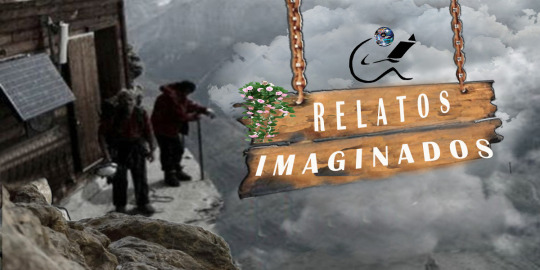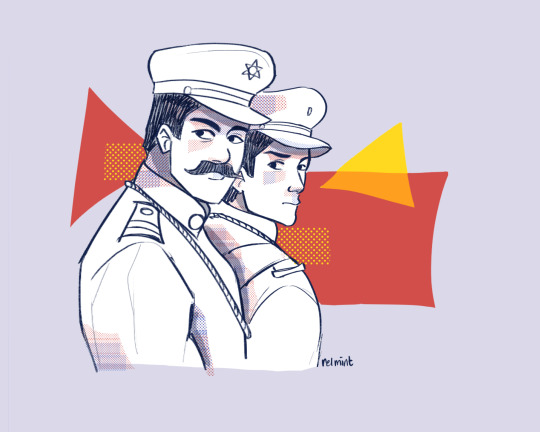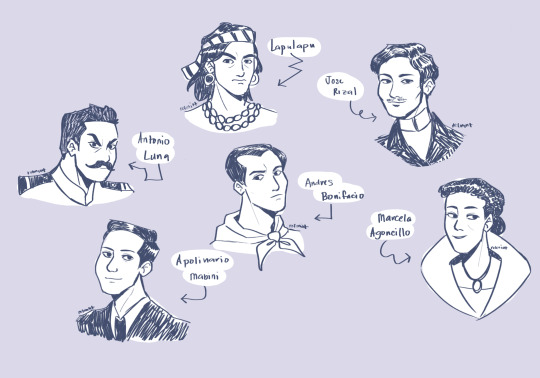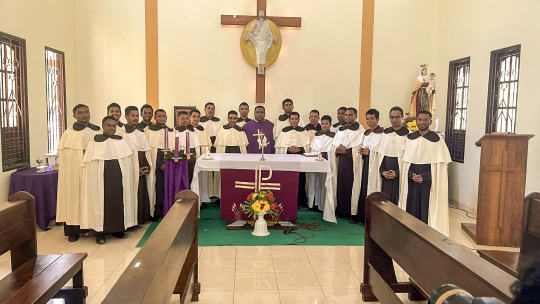#antonio bonifacio
Explore tagged Tumblr posts
Text
Battle of Imus and Zapote kinda slaps and slayed by Miong ngl.
I've had this thought for a while. You know how Americans, like, talk about George Washington and he's the first president and there are like stories about him being a good leader and role model and whatnot?
Meanwhile, the first president of the Philippines is pretty much hated cause he's the reason why two of our national heroes are dead and people are still bitter about it to this day.
#talking about me and my life#thoughts#hahahaha#rants#philippines#filipino#heneral luna#antonio luna#andres bonifacio#usa#america#united states of america#president#history#george washington#emilio aguinaldo#idk i just find it funny jaha
77 notes
·
View notes
Text
RELATOS IMAGINADOS: Più avanti
IMAGINED STORIES: Più avanti ANTONIO PIPPO PEDRAGOSA. Periodista, Escritor, Editorialista. COLUMNISTA Estoy recorriendo su casa, don Pedro. I’m touring your house, Don Pedro. No, no la de San Justo, donde nació, sino la que ahora es un museo en su honor, en La Plata: la de su muerte. Lo hago con un profundo respeto que se parece a la veneración; y no crea usted que es uno de esos ritos…

View On WordPress
#ANTONIO PIPPO PEDRAGOSA EL MEJOR DEL 2023#Argentina#COLUMNA#lomasleido#lomasvisto#PEDRO BONIFACIO PALACIOS#PIU AVANTI#RELATOS IMAGINADOS#URUGUAY
0 notes
Text
Kalayaang pinagtanggol ng ating pambansang bayani
Alam na natin kung ano ba talaga ang Kalayaan, pero dapat din natin bigyang pansin ang mga sakripisyo ng ating mga pabmansang bayani at ang kanilang kontribusyon tungkol sa kalayaan. Kasama na rito sina
-José Protasio Rizal Mercado y Alonso Realonda o mas kinikilala bilang Dr. Jose Rizal
Iilan lamang sa mga kontribusyon sa ating kalayaan ay pag-sulat sa isang nobelang pinamagatang Noli Me Tangere na kung saan binuksan nito ang mga mata ng mga Pinoy sa totoong mga gawa ng mga taga Espanya.
-Andrés Bonifacio y de Castro
Malaki ring ambag ang nagawa ni Andres Bonifacio dahil sa pagtatag niya sa Rebolusyonaryong tipun na tinatawag na Kataas-taasang, kagalang-galangang, katipunan o ang KKK na kung saan layunin din nila na palayain ang ating bansa sa mga kamay ng mga Espanyol.
Isa rin siyang magiting mandirigma o taong masasabi na isang mandirigma dahil sa patuloy niyang paglaban sa pisikal para makamit ang kalayaan
-Antonio Narciso Luna de San Pedro y Novicio Ancheta o mas kilala bilang Heneral Luna
Isa siyang pambansang bayani na kilala bilang mainitin sa ulo pero hindi ito isang hadlang sa pagiging bayani niya. Kahit namatay siya ng walang kasalanan ay naging malaking inspirasyon siya sa batang heneral na si Gregorio del Pilar
Iilan lamang ito sa mga taong nagbibigay halaga ng salitang Kalayaan at ang pag-bukas ng mga mata ng lahat ng mga mamamayang Pilipino.

11 notes
·
View notes
Text


la strana storia di olga 'o' (1995) dir. antonio bonifacio


11 notes
·
View notes
Text
:DDD


Ang mga Bayani ng Pilipinas!
#philippines#southeast asia#bayani#filipino#philippine history#rel'sart#translation: The Heroes of the Philippines!#Well some of them at least lawl#Jose Rizal#antonio luna#apolinario mabini#andres bonifacio#Marcela Agoncillo#lapulapu#Goyo#Gregorio Del Pilar#philippine heroes#Filipino heroes#phart
147 notes
·
View notes
Text

'Portrait Study', as painted by Italian painter Antonio Mancini (1852 – 1930).
In 1871 two of his works were exhibited at the Neapolitan salon, where they were purchased by two foreign clients, both painters: Per un fiore (For a Flower) and L'ultima medicina (The Last Medicine!). When Mancini was in Paris in 1877-78 he met the Impressionist painters Edgar Degas and Édouard Manet and befriended John Singer Sargent, who famously pronounced him to be the greatest living painter. This pronouncement matured the works that were completed after it where a brightened palette and striking impasto technique on the canvas, and a bold command of pastels on paper, had their effect.
In 1881, Mancini suffered a disabling mental illness. He settled in Rome in 1883 for twenty years, unable to travel to see international exhibitions. In 1903 he moved to Frascati where he lived until 1918. During this period of retreat in Mancini's life he was often destitute. He relied on the help of friends and art buyers to survive. After the First World War his living situation stabilised and he achieved a new level of serenity in his work.
Mancini died in Rome in 1930 and was buried in the Basilica Santi Bonifacio e Alessio on the Aventine Hill.
3 notes
·
View notes
Text

Bumped into reliable Dulaang UP administrative staff members Jesus (Jess) Lopez & Archie Clataro. UP has been fortunate to have dedicated and reliable administrative staff members like Kuya Jess (since 1979) and Archie (since 2009), who have served at the College of Arts and Letters for many years. Not surprisingly, Archie was named recipient of UP Diliman's Gawad Tsanselor para sa Natatanging Kawani two years ago. Kuya Jess, on the other hand, has worked in theatrical productions involving National Artists Salvador Bernal, Wilfrido Maria Guerrero, Amelia Lapeña Bonifacio, Bienvenido Lumbera, Antonio Mabesa and Rolando Tinio. They have played a crucial role in ensuring the smooth operation of their office, handling various administrative tasks with efficiency and professionalism. Their years of experience and commitment have been invaluable in supporting faculty members, staff members, students, alumni, and visitors. Their hard work and dedication have been instrumental in maintaining high standards of excellence and reputation within the university community. We are grateful for Kuya Jess and Archie's continued service and look forward to many more years of collaboration.
2 notes
·
View notes
Text


Just some Pictures of the BRP Antonio Luna (FF-151) Guided Missile Frigate of the Philippine Navy (PN) and its Bridge during a Maritime Cooperation Activity (MCA) with the Military Forces of our official former Colonizer and current De-Facto Colonizer, the United States (US).
The MCA was held off the Coast of Palawan and also involved other Assets of the Armed Forces of the Philippines like the BRP Andres Bonifacio (PS-17) Offshore Patrol Vessel (OPV) and two FA-50PH Fighting Eagle Aircraft of the Philippine Air Force (PAF).
Here is the Link to the Post of the Armed Forces of the Philippines (AFP) Facebook Page containing the original Pictures: https://web.facebook.com/armedforcesofthephilippines/posts/pfbid02N15csnJEsRxbFek58t4Lf9sakt4GPV3GUjFLbH7kvq1S9HoLEv9xF9tF7n19m2m1l
SOURCE: Armed Forces of the Philippines Facebook Page Post, 01/19/25 – 1123H {Archived Link}
#brpantonioluna#ff151#philippinenavy#guidedmissilefrigate#maritimecooperationactivity#mca#colonizer#unitedstates#defacto#brpandresbonifacio#ps17#offshorepatrolvessel#opv#fa50phfightingeagle#philippineairforce
0 notes
Text
Article 1261. If, the consignation having been made, the creditor should authorize the debtor to withdraw the same, he shall lose every preference which he may have over the thing. The co-debtors, guarantors and sureties shall be released. (1181a)
CASE DIGEST: Banco Filipino vs. Diaz I G.R. No. 153134 | June 27, 2006 | CALLEJO, SR., J.
FACTS:
On March 8, 1979, spouses Diaz secured a loan from Banco Filipino Savings and Mortgage Bank in the amount of P400,000.00 bearing an interest rate of 16% per annum. In November 1982, the said loan was restructured or consolidated in the increased amount of P3,163,000.00 payable within a period of 20 years at an interest rate of 21% per annum. The obligation was to be paid in equal monthly amortization of P56,227.00, and secured by a real estate mortgage over two commercial lots situated at Bolton and Bonifacio Streets in Davao City. As additional collateral, the respondents assigned the rentals on the mortgaged properties in favor of petitioner bank. Despite repeated demands made on them, the respondents defaulted in the payment of their obligation beginning October 1986. The Diaz spouses tried to settle their account by tendering the sum of P1,034,600.00as full payment but bank refuses to accept it. The spouses then deposited by way of consignation with the RTC of Makati City, a manager’s check dated December 5, 1991, in the amount of P1,034,600.00 as full payment of their loan obligation. Petitioner bank was duly informed of such consignation. The CA relied on Article 1260 of the Civil Code which provides, in part, that “ before the creditor has accepted the consignation, or before a judicial declaration that the consignation has been properly made, the debtor may withdraw the thing or sum deposited, allowing the obligation to remain in force.” As a result, interest rate became more than 60% per annum, CA said it is “excessive, iniquitous, unconscionable and exorbitant”
ISSUE:
Whether or not the consignation of Diaz be withdrawn?
RULING:
YES the Diaz spouses have a right to withdraw the consignation made. The bank has not accepted the deposit. Consignation is the act of depositing the thing due with the court or judicial authorities whenever the creditor cannot accept or refuses to accept payment and it generally requires a prior tender of payment. Before the consignation has been accepted by the creditor or judicially declared as properly made, the debtor is still the owner of the thing or amount deposited, and, therefore, the other parties liable for the obligation have no right to oppose his withdrawal of such thing or amount. The debtor merely uses his right, and unless the law expressly limits that use of his right, it cannot be prevented by the objections of anyone. Our law grants to the debtor the right to withdraw, without any limitation, and we should not read anon-existing limitation into the law. Although the other parties liable for the obligation would have been benefited if the consignation had been allowed to become effective, before that moment they have not acquired such an interest as would give them a right to oppose the exercise of the right of the debtor to withdraw the consignation.
Source:
Obligations and Contracts (2022); Atty. Ronaldo F. Flores | Central Book
0 notes
Text
CARATTERI ESOTERICI ED EXOTERICI DELL’OCCULTAZIONE DEL MAHDI NELL’ESCATOLOGIA SCIITA
di Antonio Bonifacio Come Erode duemila anni fa cercava disperatamente un neonato che sarebbe stato quel futuro “re” che lo avrebbe privato del suo potere temporale, così l’Erode dei nostri tempi è anch’esso alla ricerca di un fanciullo prodigioso destinato a porre fine alla “storia”, il quale, giunto il suo avvento, «colmerà la Terra di armonia e giustizia come ora è colma di tirannia e…

View On WordPress
1 note
·
View note
Text

:Medieval and Renaissance Manuscripts (MRMSS)
*Call Number:B1 363 D
*Location:Microform Collection (MICROPR)
*Call Number:MSM0630
*Record ID:158525
*Accession Number:MS M.630.1-35 MS M.630 MS M.630A (box)
*Name:Pierpont Morgan Library. Manuscript. M.630.1-35.
*Title:Visconti-Sforza Tarot Cards.
Created:Milan, Italy, ca. 1450-1480
Related Records:Clickherefor related items
Description:35 cards : heavy cardboard, illuminated ; 173 x 87 mm
Links: Digital facsimile Detailed descriptions and additional bibliographies Images Online exhibition
Folio Records:Related Records-- browse folio records in CORSAIR
Credit:Purchased by J. Pierpont Morgan (1837-1913) in 1911.
Genres:Illuminated manuscripts--Italy--Milan--15th century. Cardboard. Cuir bouilli--France--14th century. Emblems (symbols)--Italy--Milan--15th century. Devices (symbols)--Italy--Milan--15th century. Playing cards--Italy--Milan--15th century.
Language:Latin captions on card 9; French inscription on cards 28, 29, and 34: A BON DROYT.
Notes:Tarot cards; 33 illuminated in Milan, Italy, ca. 1450, and 3 replacement cards (M.630.5 - Temperance; M.630.8 - Fortitude; and M.630.13 - The Sun) illuminated ca. 1480. Decoration: 8 court cards and 15 trump cards with figural representations, 12 decorated pip (numerical) cards. Artist: The original cards have been attributed to Francesco Zavattari, while more agree with the attribution to Bonifacio Bembo. The replacement cards have traditionally been attributed to the Cremonese artist Antonio Cicognara, an attribution questioned by Dummett (1980), who suggests instead an artist from Ferrara or (Dummett 2007) Benedetto Bembo (brother of Bonifacio) and proposes that they were not replacements but part of the original set as designed by the Bembo workshop. Bauer-Eberhardt (1997) advances Franco dei Russi (or de' Russi) as the artist of these later cards, attribution accepted by the exhibition catalogue Tarots enluminés (2021). A complete pack of tarot cards consists of seventy-eight cards; the thirty-five cards in the Pierpont Morgan Library, twenty-six in the Accademia Carrara in Bergamo, and thirteen owned by the Colleoni family of Bergamo form one of the most complete sets of 15th cent. painted tarot cards of Italian origin. Previously stored in late 14th-century French cuir bouilli casket, said to be from the Pères de la Merci de Toulouse, with arms on an escutcheon: an angel confronting a shield bearing a cross; casket decorated with scenes of chivalry: a lady showing her heart to a knight, and a knight accepting the heart and giving the lady a ring; the casket was purchased by J.P. Morgan (1867-1943) on 7 November 1919 from Léon Gruel, Paris.
Variant Title:Colleoni-Baglioni tarrocchi deck fragment
Provenance:Executed by or for a member of the Visconti-Sforza family (emblems and devices of both families found intermingled on the cards, i.e., the Sforza three interlinked diamond rings, the Visconti ducal crown of Milan with palm and laurel), probably Francesco Sforza (d. 1466), most likely after his triumphal entry as Duke of Milan 25 March 1450; the patrician family Bon from Venice?, as suggested by heraldic elements in certain cards (parti de gueles et d'argent) and a haloed lion holding a book on the shield of the King of Swords (M.630.22); Count Alessandro Colleoni of Bergamo (d. 1900); purchased by J. Pierpont Morgan (1837-1913) through Hamburger Frères,
0 notes
Text

On Sunday 3 November, the first Sunday of Advent, 19 young Carmelites renewed their vows in St Elias community, Hera, Timor-Leste.
Fr Carlito Da Costa Araújo (Provincial Delegate) received their vows on behalf of Fr Bruce Clark (Prior Provincial). Fr Roque Soares Da Cruz (Prior & Formator) was also present at the Mass together with members of JUCAR (Carmelite Youth) and Carmelite alumni.
The mass was followed by lunch and a football match.
Congratulations to Brs Caetano, Paulo, Jacob, Elias, Bonifacio, Fernando, Celestino, João, Samuel, Antonio, Calisto, Pedro, Zebedeu, Aleixo, Gaudencio, Natacio, Ponciano, Honorio and Virgilio.
#carmelite#carmelites#priest#priesthood#brotherhood#vocation#catholic#christianity#religious#religiouslife#portrait#melbournecatholic#prayer#faith#spirituality#eucharist#mass#timorleste#celebration#kingdomofgod#ourladyofmountcarmel#lectiodivina#ordination#jesus#christ#peace#hope#courage#love
0 notes
Link
PIÚ AVANTI es posiblemente el más popular de los poemas escritos por Pedro Bonifacio Palacios , más conocido como Almafuerte...
0 notes
Text




la strana storia di olga 'o' (1995) dir. antonio bonifacio
0 notes
Text
Who Are Our Modern Heroes?
In the Philippines, National Heroes Day is celebrated to pay tribute to the legacy that these individuals have left to society. A man wearing armor and carrying a sword is often referred to as a hero. Heroes are people who have participated in disputes and shown courage in the front row and selflessly risked their own well-being in order to save the lives of others.
Cavite is place where a lot of historical events occurred. There are house and lot for sale in Bacoor Cavite that are built with one by modern heroes who are engineers since they are determined to make sure that the house they are building are safe for everyone may it be for families or individuals. The word "hero" is often associated with our past heroes who are renowned for their acts of selflessness, patriotism, and great sacrifices such as Dr. Jose Rizal, Andres Bonifacio, General Antonio Luna, Apolinoario Mabini, Melchora Aquino, and Gabriela Silang. Those aforementioned heroes stood up for our country and protected the rights of the Filipinos. However, there are modern-day heroes that are also demonstrating bravery and compassion even if it means sacrificing their own well-being.
This article will discuss and acknowledge the people who are showing a great and fair fight in their own battles that are truly evident every day.
0 notes